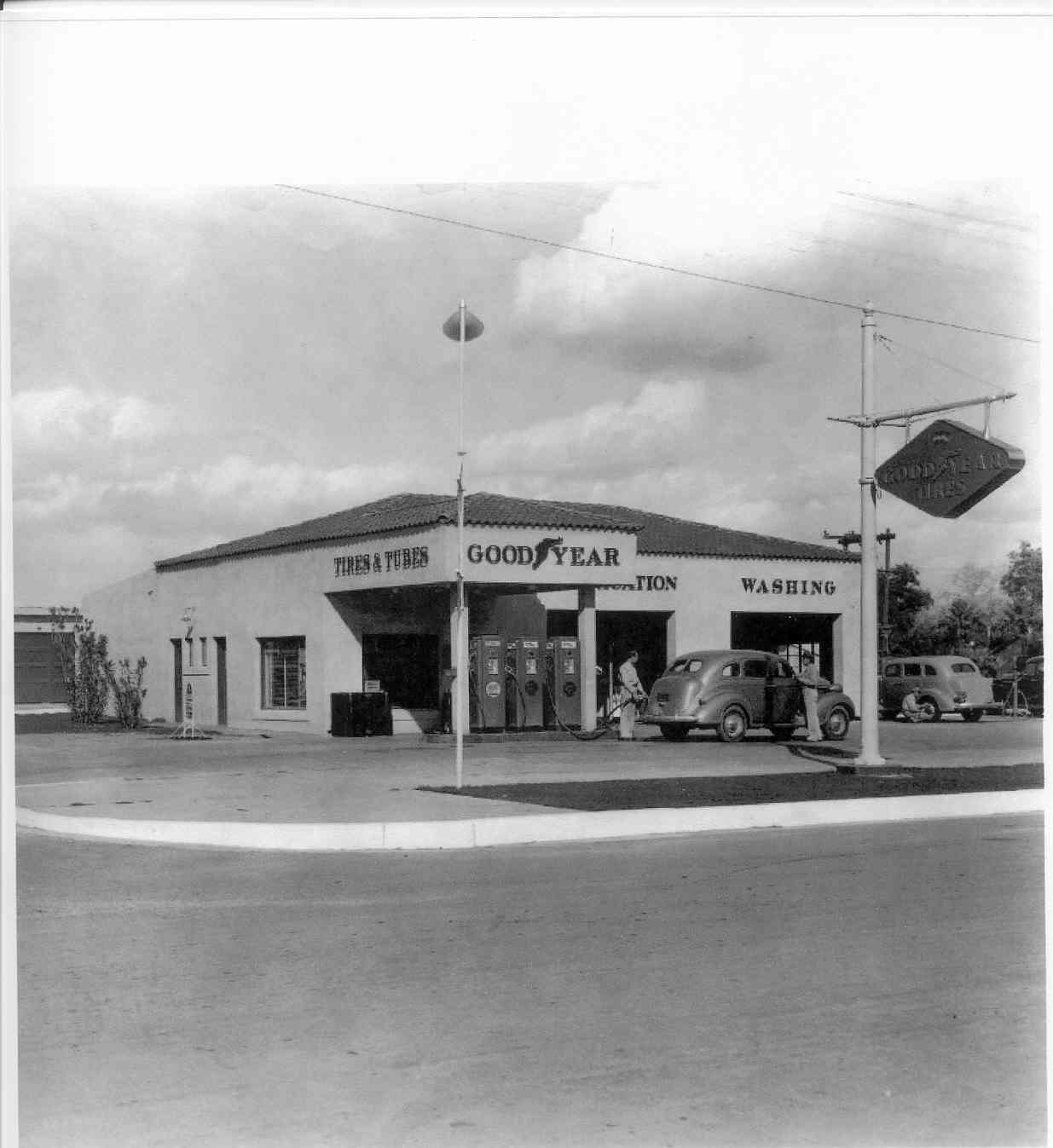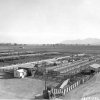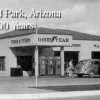A Turning Point
A Turning Point- Litchfield Park, Arizona
WWII had a major effect on Litchfield Park and it created a real turning point for its future. With Luke Field coming into the area the need for business enterprises increased during the war years of 1941-45. Goodyear Farms had an extensive building program that resulted in the completion of the entire business block facing Litchfield Road. After Abraham’s Market burned in 1943, it was rebuilt as a modern Food Market. Goodyear Farms opened a Company General Store. During the winter of 1943-44 older buildings were remodeled to make space for numerous other shops and a medical office building. The final building that completed the block was a large structure connecting the medical building and the drug store. This building was to also house the post office and a bank. The Valley National Bank opened a Litchfield Park branch in December of 1944. This new convenience was added as a result of the War bringing thousands of people into the area. Upon completion of the last building on the west- side of Litchfield Road. the entire frontage was remodeled into one front with the appearance of a large building of Spanish design finished in crème stucco and red tile. Later a large building was added to the north side of the business block for a dry cleaning business.
 While the business area grew the residential area had to expand to meet the growing number of employees and new residents. All available houses were occupied and to fill the need houses were moved in from Goodyear Ranch and located on several blocks north and west of the drug store. Prior to 1937, Goodyear employees were given no opportunity to own homes, but in that year Goodyear opened a subdivision of 25 lots on the west- side of Litchfield Road. The residential area was again expanded in 1945 when the Goodyear Wingfoot Homes subdivision was added.
While the business area grew the residential area had to expand to meet the growing number of employees and new residents. All available houses were occupied and to fill the need houses were moved in from Goodyear Ranch and located on several blocks north and west of the drug store. Prior to 1937, Goodyear employees were given no opportunity to own homes, but in that year Goodyear opened a subdivision of 25 lots on the west- side of Litchfield Road. The residential area was again expanded in 1945 when the Goodyear Wingfoot Homes subdivision was added.
Temporary office buildings were replaced by larger structures to provide space for an increasing office staff and for additional office facilities. Litchfield Park was not incorporated and was governed by Goodyear Farms. The operation of the town was divided into departments of streets, parks, water supply, sewage, fire and law enforcement. Goodyear Farms did not have ordinances but regulations.
In 1941, the influx of civilian workers and military personnel to Luke Field and the Goodyear Aircraft Corp. brought difficulties to the school district. The Federal Housing Authority near Luke Field was built in Litchfield School District and transportation of the children had to be provided. There was no high school in the vicinity of the Goodyear Aircraft facility and the students were transported into the Litchfield High School. The enrollment in Litchfield School increased dramatically and the school had to launch a new building project. Fortunately the Federal Government had provided for such War emergencies under the Lanham Act and finances were obtained under this Act to build additional space. The Wigwam Resort was an active participant in the war effort. It was closed during the War years of 1942-45. The Officer personnel from Luke Field and the Naval Air Facility were housed in the Wigwam.
One of the big differences in lifestyle came with the upgrading of services in Litchfield Park. With the sudden influx of several thousand cadets and an increase in the civilian population transportation in the area was greatly improved. Not only did improved transportation change lifestyles, but due to the expansion in the area Central Arizona Light & Power Company found it necessary to expand its system during the war.
A new gas line was laid to Luke Field in 1941 and later extended to Litchfield Park. Eventually a gas line was extended to every house in Litchfield Park that solved cooking and heating problems. A new phone system was installed at Luke Field by Mountain States Telephone & Telegraph Company. A new modern dial system was installed in Litchfield Park and the number of telephones increased from thirty-three to 613 during the war.
Because of the influence of WWII, Litchfield Park was changed from a small group of labor camps in the desert to a modern village whose inhabitants had most of the conveniences of a larger city. Litchfield Park was no longer an isolated village. The quiet and peaceful village of Litchfield Park had been transformed to one with diversified interests and a broadened horizon





